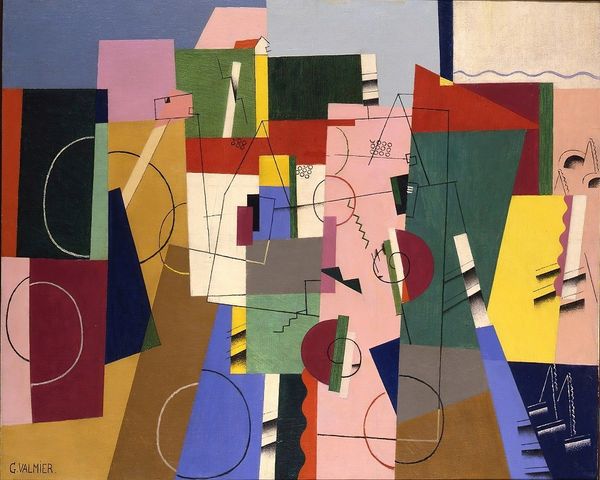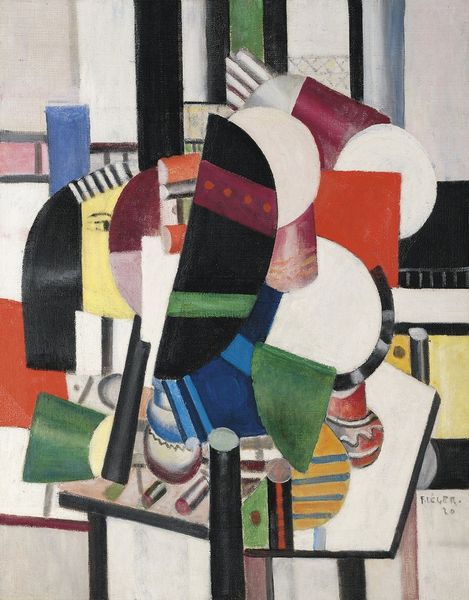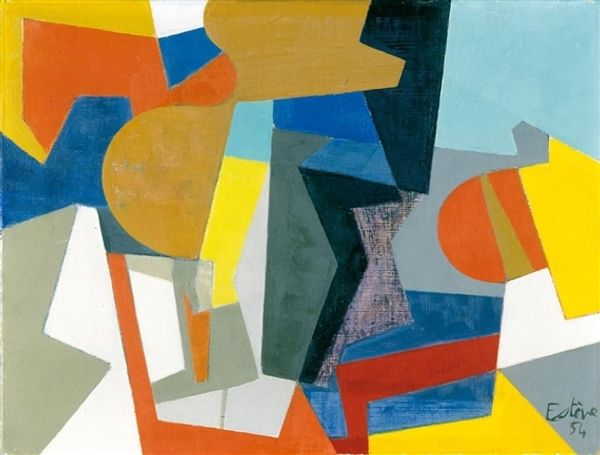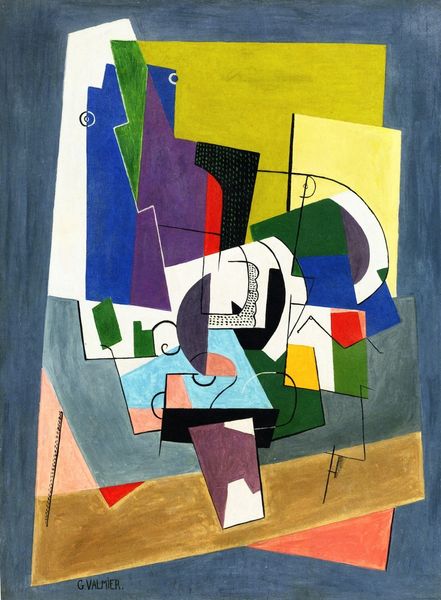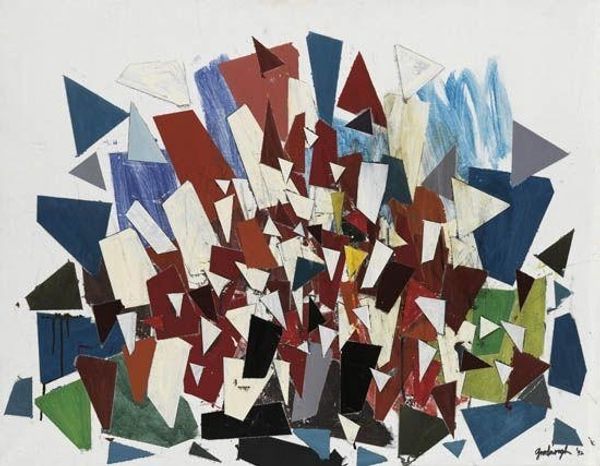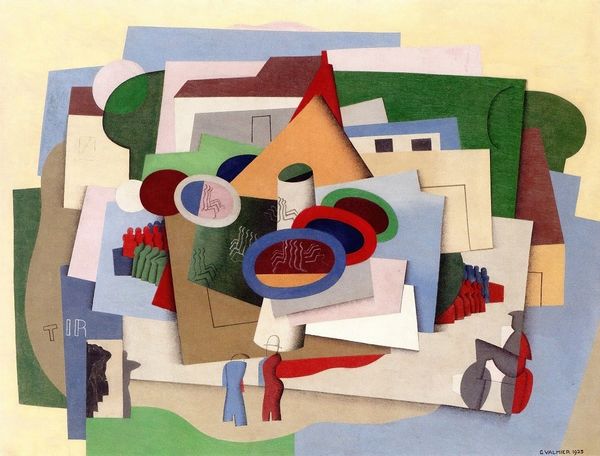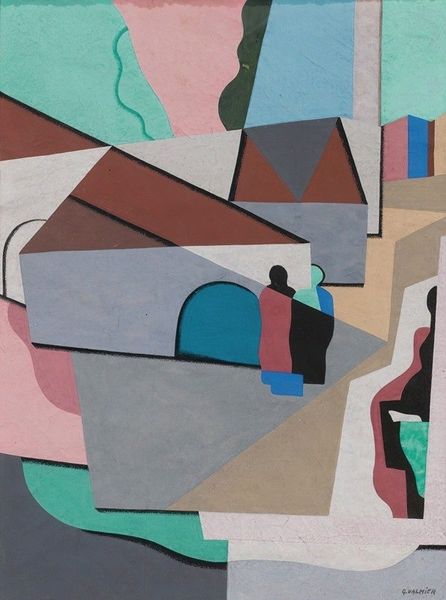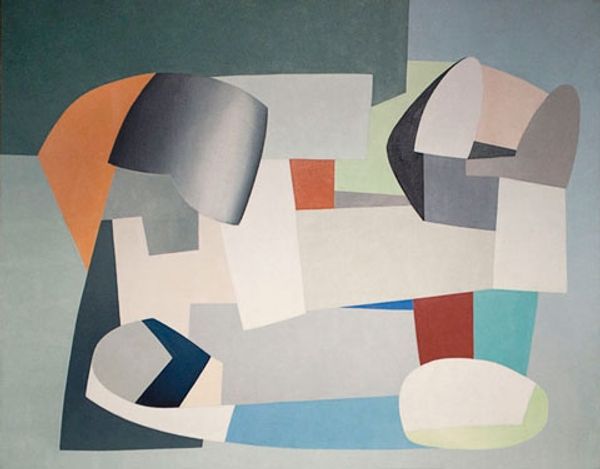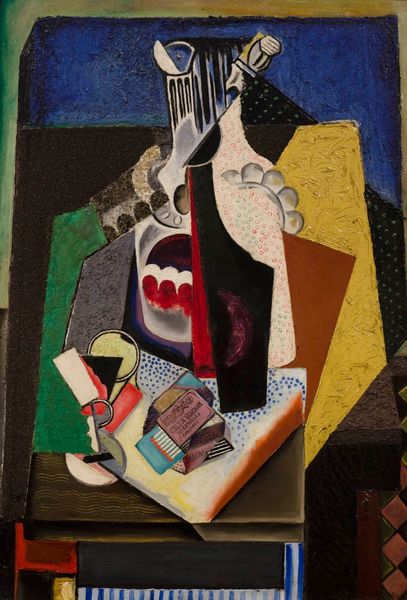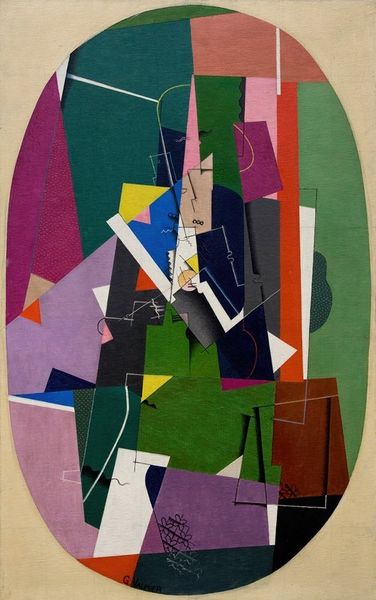
mixed-media
#
cubism
#
mixed-media
#
geometric
#
abstraction
#
line
#
mixed media
#
modernism
Copyright: Public domain
Curator: Georges Valmier’s 1920 mixed-media piece, titled “The Piano,” embodies a distinctive approach to Cubist abstraction. Editor: My first impression is that the geometric shapes and layering create a visual cacophony, like an instrument taken apart and reassembled in an unconventional, even rebellious manner. There is an energy here, though, not total discord. Curator: Absolutely. Valmier, influenced by early 20th-century avant-garde movements, explores how abstraction can evoke emotional and sensory experiences. We have to consider how it engages with contemporaneous interest in synesthesia, or the blurring of the senses. Editor: Looking at this from a post-structuralist lens, it makes me consider the disruption of conventional representation, similar to what James Joyce did in literature at the time. Do you think Valmier’s abstract language provides an analogous experience? It defies straightforward interpretations, prompting reflection on how we perceive art. Curator: Exactly! You see hints of reality, perhaps sheet music or piano keys. That push-and-pull challenges conventional assumptions about what a piano represents and, more broadly, what art can signify or symbolize. His piece enters into dialogue with a growing machine age and all the politics related to these novel modes of production. Editor: It’s provocative because the vibrant color and rigid line combinations create simultaneous feelings of attraction and unease. The dots draw your eyes and the lines point elsewhere, refusing any harmonious totality of meaning. There’s an intentional fragmentation at play, reflecting modern society. Curator: I see that fragmentation too. And you see these themes and approaches further developed throughout the artist's career. Post-World War I, he leaned increasingly towards abstraction as a universal language, finding spirituality through geometrical and harmonious forms. Editor: “The Piano”, with its geometric deconstruction, feels strikingly prescient, as though it mirrors both the turmoil and possibility embedded within early modern experience. The picture encourages active engagement from the audience, and forces you to participate to assemble any sense of meaning. Curator: Right, a truly generative piece in terms of meaning-making that exists well beyond its historical moment of production. Editor: It certainly makes me wonder how such forms will be received by later generations; perhaps it remains to challenge us all in perpetuity.
Comments
No comments
Be the first to comment and join the conversation on the ultimate creative platform.
